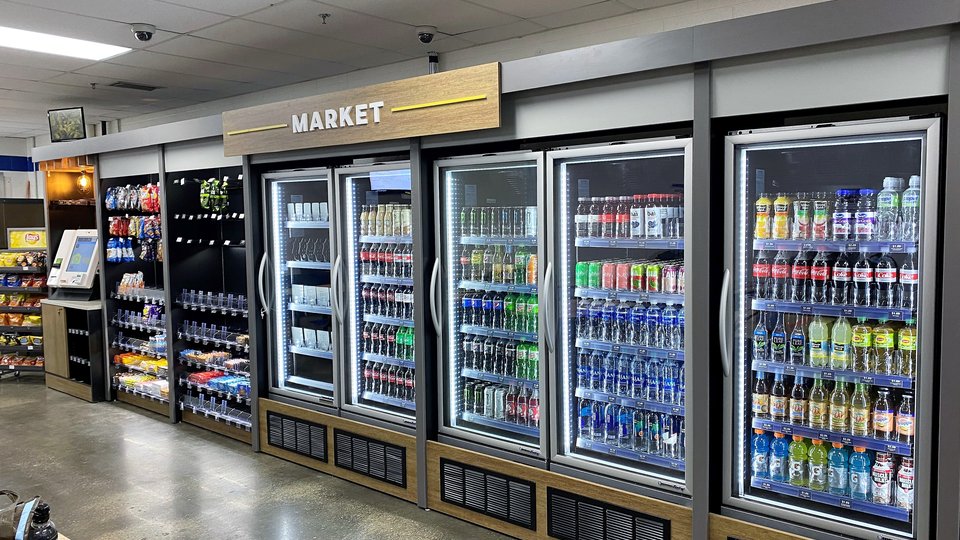Commentary
How IoT refrigeration cabinets improve micro markets

November 4, 2020 by Julian Attree
The micro market landscape is always reinventing itself, and with the lighting-speed consumer purchasing behavior changes we are experiencing in today's pandemic environment, the last eight months are seeing an uptick in unattended retail interest.
Not only are we witnessing faster expansion into self-service checkout and digital payment, there's also a big move towards interactive machines associated with the proliferation of artificial intelligence and Internet of Things technology.
Many convenience services operators already know that connectivity options can leverage the power of IoT to deliver improved business efficiency, enhanced customer service, simplified quality assurance compliance and better profitability. With connected merchandisers, owners can check on current and historical alarm conditions associated with problems such as high temperature, door openings and other possible malfunction alarms.
For example, if a customer calls to complain about soft ice cream, this can be handled remotely by checking the temperature and making adjustments.
If a customer accidently knocks over a food item in the cabinet that prevented the door from closing, smart sensors can send a door alert to notify a customer or route driver to pick up the item and close the door properly.
Endless enhancements
But technology doesn't stand still. More data will bring still more benefits.
We are also seeing advancements in technologies for food safety, addressing another area COVID-19 is bringing into focus for customers. Connected refrigeration cabinets are able to access more data on several key parameters, like cabinet temperature, door opening status, opening frequency, power failures, compressor cycles and select accessories like safety door lock status.
Commercial refrigeration cabinets can automatically log temperature requirements and ensure proper holding temperatures that prevent perishable inventory and potential foodborne illnesses, thereby keeping food safe for consumption.
With connected cabinets and components which safeguard stored food products by locking the merchandiser when a pre-set temperature limit is breached, operators can instantly diagnose and solve issues, pre-emptively avoiding food spoilage, eliminating down time and preventing customer frustration.
Problem-solving scenarios
Micro market owners can now diagnose and solve refrigeration cabinet issues by accessing reports containing minute, daily and weekly merchandiser data, which is handy if a health inspector decides to pay a visit. The data can even be accessed remotely without having to make a visit to the market location.
If you received a high temperature alarm on your phone, you can easily verify, remotely, several possible parameters causing the problem, such as door closed.
If it was related to an equipment issue, you can call the manufacturer, and their customer service department can conduct a deeper analysis to determine the issue, which could be a faulty evaporator fan that needs replacing.
Engaging a restocking alarm delay can be done by a route driver who forgot to engage it.
Shortly after leaving the location, the high temperature alarm goes off and the driver receives an instant text. After evaluating the data, the driver simply activates the alarm stock delay and everything goes back to normal, eliminating potential customer annoyances and a service call.
Other benefits of IoT-based refrigeration cabinets include:
- Allowing for integration with providers of other solutions and technologies when it makes sense. For example, having a refrigeration cabinet communicate with a cooking system, so that when the customer takes a food product from the cooler shelf, a sensor is triggered to the oven for it to pre-heat for the food product that was purchased from the cabinet.
- Purchasing a product using their own tablet device or self-service equipment – customers make the food product purchase, the refrigerator cabinet unlocks and gives the customer access so they can grab what they bought. Another more economical payment solution is having a tablet or touchscreen affixed to the cooler door where the customer can select what they want from the cabinet, then the customer scans the product and pays from the same tablet/touchscreen.
- Integrating a level of grab-and-go technology into coolers and freezers.
Amazon-to-go concepts are a reality for micro market operators.
Further development of refrigeration systems will include the integration of technology that allows for unattended micro markets in public spaces through the use of video recognition capabilities, on-the-shelf product weight sensors that track overall weight and an integrated locking system.
Creating an automated/controlled micro market experience with end-to-end tracking is the future. And that future that enables the smart micro market ecosystem or unmanned, self-service solutions is here today. The potential ways these new capabilities can be leveraged is almost endless and allow for less downtime, more satisfied customers, quick fixes and peace of mind for operators.







